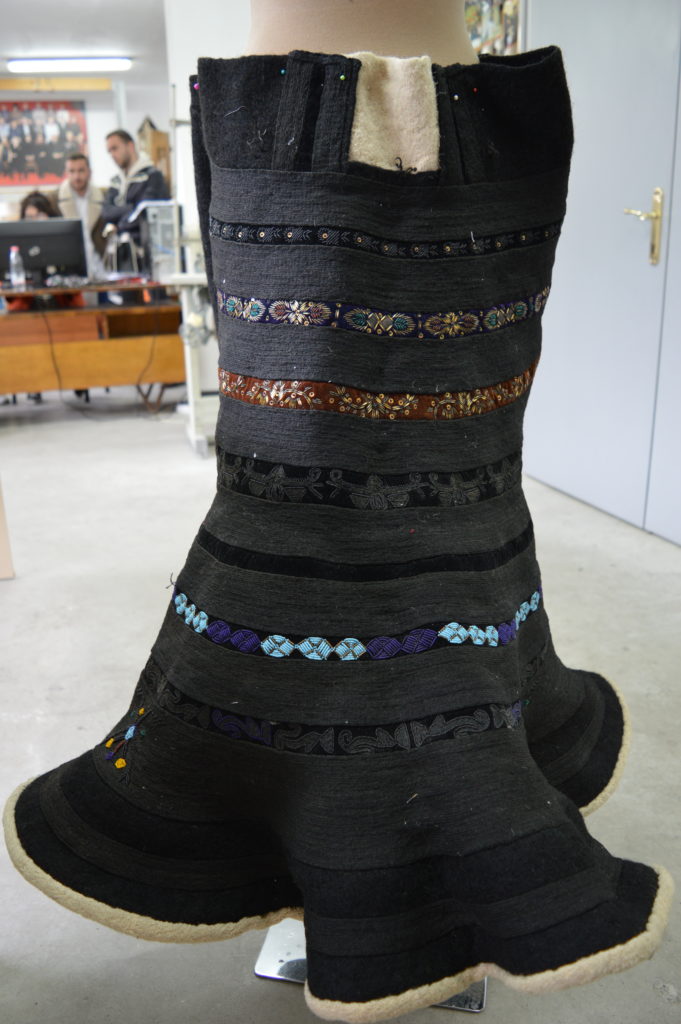Immobility
The intense weight and rigid construction of the xhubleta restricted the wearer’s movements. The dress itself weighed up to fifteen kilograms, but further decoration added to burden of the woman. On some costumes, a metal ornament was attached to the jacket. This ornament was shaped like a bullet, digging into the chest of the woman when she moved. This abrasion was meant to remind the woman of the punishment she would receive if she betrayed her husband’s family (Berhami, 2018). In some areas, on her wedding day, a woman’s family would give her future husband a bullet. The bullet was meant to kill the young woman if she ever dishonored her new family through adultery or lack of hospitality (Young, 2000).
The xhubleta is often regarded as having an impressive form. It has been described as a “sculpture, not a dress” (Hamza, 2018) with a flowing ‘tail’ as the woman walks. Men were expected to not show any outward desires for women, and romance and love were not intertwined with marriage (Young, 2000). Yet, for some women, pillows would be placed under the dress in order to accentuate their figure and the form of the xhubleta (Dukgilaj, 2018). This control over women’s physical form through dress speaks to the patriarchal control and servitude women endured. At the same time, women spoke about how the impressive size commanded respect, as one woman put it, “to wear a xhubleta makes you feel like a real respected woman” (P. Noja, personal communication, Nov. 6, 2018).
“I felt wider (laughs), but I was delighted and respected.”
– Lule Sokoli, 2018





